Cooperative Path Planning for Multiple Mobile Robots via HAFSA and an Expansion Logic Strategy
Abstract
:Featured Application
Abstract
1. Introduction
2. Hybrid Artificial Fish Swarm Algorithm
2.1. Experiential Learning
2.2. Detection Operator
- Step 1.
- Initialize the population size NUM, the parameters step and visual, and the maximum number of iterations N.
- Step 2.
- Update the step size and position of the artificial fish using Equation (7).
- Step 3.
- Calculate the food concentration for each artificial fish using Equation (8) and record the optimal value in the bulletin board.
- Step 4.
- Perform preying behavior, swarming behavior, following behavior and random behavior.
- Step 5.
- Check the termination condition. If the stopping condition is satisfied, terminate the iteration process and output optimal solution. Otherwise, return to Step 2.
3. Local Path Planning Based on an Expansion Logic Strategy
4. Simulation Experiments
5. Conclusions
Author Contributions
Funding
Conflicts of Interest
References
- Cheng, H.; Chen, H.; Liu, Y. Topological Indoor Localization and Navigation for Autonomous Mobile Robot. IEEE Trans. Autom. Sci. Eng. 2015, 12, 729–738. [Google Scholar] [CrossRef]
- Jhang, J.; Lin, C.; Lin, C.; Young, K. Navigation Control of Mobile Robots Using an Interval Type-2 Fuzzy Controller Based on Dynamic-group Particle Swarm Optimization. Int. J. Control Autom. Syst. 2018, 16, 2446–2457. [Google Scholar] [CrossRef]
- Raja, P.; Pugazhenthi, S. Optimal path planning of mobile robots: A review. Int. J. Phys. Sci. 2012, 7, 1314–1320. [Google Scholar] [CrossRef]
- Han, J.; Seo, Y. Mobile robot path planning with surrounding point set and path improvement. Appl. Soft Comput. 2017, 57, 35–47. [Google Scholar] [CrossRef]
- Cherni, F.; Boujelben, M. Autonomous mobile robot navigation based on an integrated environment representation designed in dynamic environments. Int. J. Autom. Control 2017, 11, 35–53. [Google Scholar] [CrossRef]
- Mantegh, I.; Jenkin, M.R.M.; Goldenberg, A.A. Path Planning for Autonomous Mobile Robots Using the Boundary Integral Equation Method. J. Intell. Robot. Syst. 2010, 59, 191–220. [Google Scholar] [CrossRef]
- Wang, Y.; Cao, W. A global path planning method for mobile robot based on a three-dimensional-like map. Robotica 2014, 32, 611–624. [Google Scholar] [CrossRef]
- Hernández, K.; Bacca, B.; Posso, B. Multi-goal Path Planning Autonomous System for Picking up and Delivery Tasks in Mobile Robotics. IEEE Lat. Am. Trans. 2017, 15, 232–238. [Google Scholar] [CrossRef]
- Wu, M.; Chen, E.; Shi, Q.; Zhou, L.; Chen, Z.; Li, M. Path planning of mobile robot based on improved genetic algorithm. In Proceedings of the Chinese Automation Congress (CAC), Jinan, China, 20–22 October 2017; pp. 6696–6700. [Google Scholar]
- Zavlangas, P.G.; Tzafestas, S.G. Motion control for mobile robot obstacle avoidance and navigation: A fuzzy logic-based approach. Syst. Anal. Model. Simul. 2003, 43, 1625–1637. [Google Scholar] [CrossRef]
- Mac, T.T.; Copot, C.; Tran, D.T.; de Keyser, R. A hierarchical global path planning approach for mobile robots based on multi-objective particle swarm optimization. Appl. Soft Comput. 2017, 59, 68–76. [Google Scholar] [CrossRef]
- Akka, K.; Khaber, F. Mobile robot path planning using an improved ant colony optimization. Int. J. Adv. Robot. Syst. 2018, 15. [Google Scholar] [CrossRef]
- Precup, R.E.; Petriu, E.M.; Radae, M.B.; Voisan, E.I.; Dragan, F. Adaptive Charged System Search Approach to Path Planning for Multiple Mobile Robots. In Proceedings of the 2nd IFAC Conference on Embedded Systems, Computer Intelligence and Telematics, Maribor, Slovenia, 22–24 June 2015; Volume 48, pp. 294–299. [Google Scholar]
- Liu, S.; Sun, D.; Zhu, C. Coordinated Motion Planning for Multiple Mobile Robots along Designed Paths with Formation Requirement. IEEE/ASME Trans. Mechatron. 2011, 16, 1021–1031. [Google Scholar] [CrossRef]
- Li, H.; Yang, S.X.; Seto, M.L. Neural-network-based path planning for a multi-robot system with moving obstacles. IEEE Trans. Syst. Man Cybern. Part C Appl. Rev. 2009, 39, 410–419. [Google Scholar] [CrossRef]
- Umarani, P.; Thangaraj, P. Improving Group Communication in Wireless Telemedicine System Using Fish Swarm Algorithm. J. Med. Imaging Health Inform. 2016, 6, 1576–1580. [Google Scholar] [CrossRef]
- Zhu, J.; Wang, C.; Hu, Z.; Kong, F.; Liu, X. Adaptive variational mode decomposition based on artificial fish swarm algorithm for fault diagnosis of rolling bearings. Proc. Inst. Mech. Eng. Part C J. Mech. Eng. Sci. 2016, 231, 635–654. [Google Scholar] [CrossRef]
- Wen, S.; Cai, X.; Guan, W.; Jiang, J.; Chen, B.; Huang, M. High-precision indoor three-dimensional positioning system based on visible light communication using modified artificial fish swarm algorithm. Opt. Eng. 2018, 57, 106102. [Google Scholar] [CrossRef]
- Jin, X.; Xie, S.; He, J.; Lin, Y.; Wang, Y.; Wang, N. Optimization of tuned mass damper parameters for floating wind turbines by using the artificial fish swarm algorithm. Ocean Eng. 2018, 167, 130–141. [Google Scholar] [CrossRef]
- He, Q.; Hu, X.; Ren, H.; Zhang, H. A novelartificial fish swarm algorithm for solving large-scale reliability-redundancy application problem. ISA Trans. 2015, 59, 105–113. [Google Scholar] [CrossRef] [PubMed]
- Yiqing, H.; Panpan, W.; Mengru, Y. Path planning of mobile robots based on logarithmic function adaptive artificial fish swarm algorithm. In Proceedings of the 36th Chinese Control Conference, Dalian, China, 26–28 July 2017; pp. 4819–4823. [Google Scholar]
- Singh, N.H.; Thongam, K. Mobile Robot Navigation Using Fuzzy Logic in Static Environments. Procedia Comput. Sci. 2018, 125, 11–17. [Google Scholar] [CrossRef]
- Tuncer, A.; Yildirim, M. Dynamic path planning of mobile robots with improved genetic algorithm. Comput. Electr. Eng. 2012, 38, 1564–1572. [Google Scholar] [CrossRef]
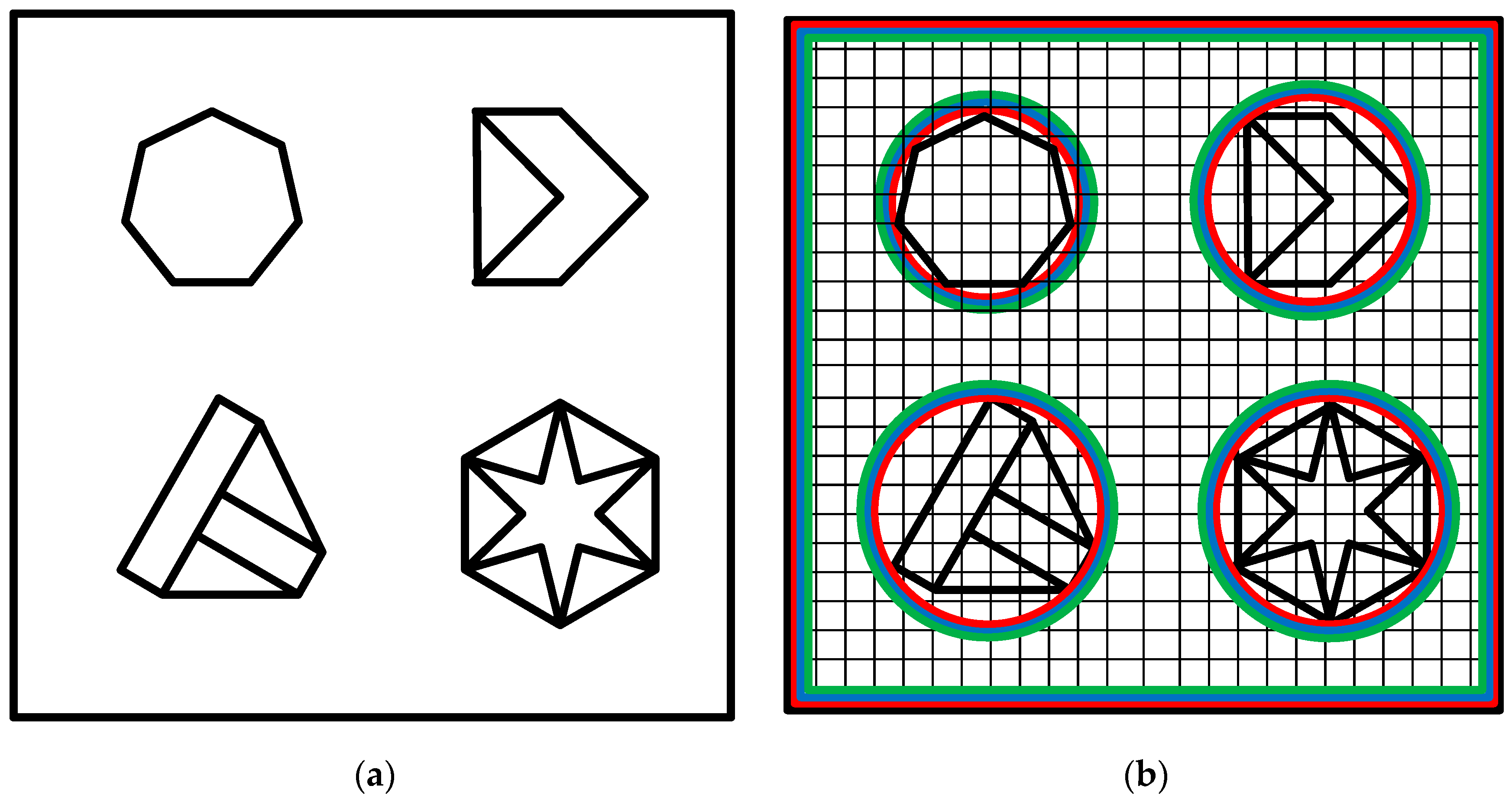
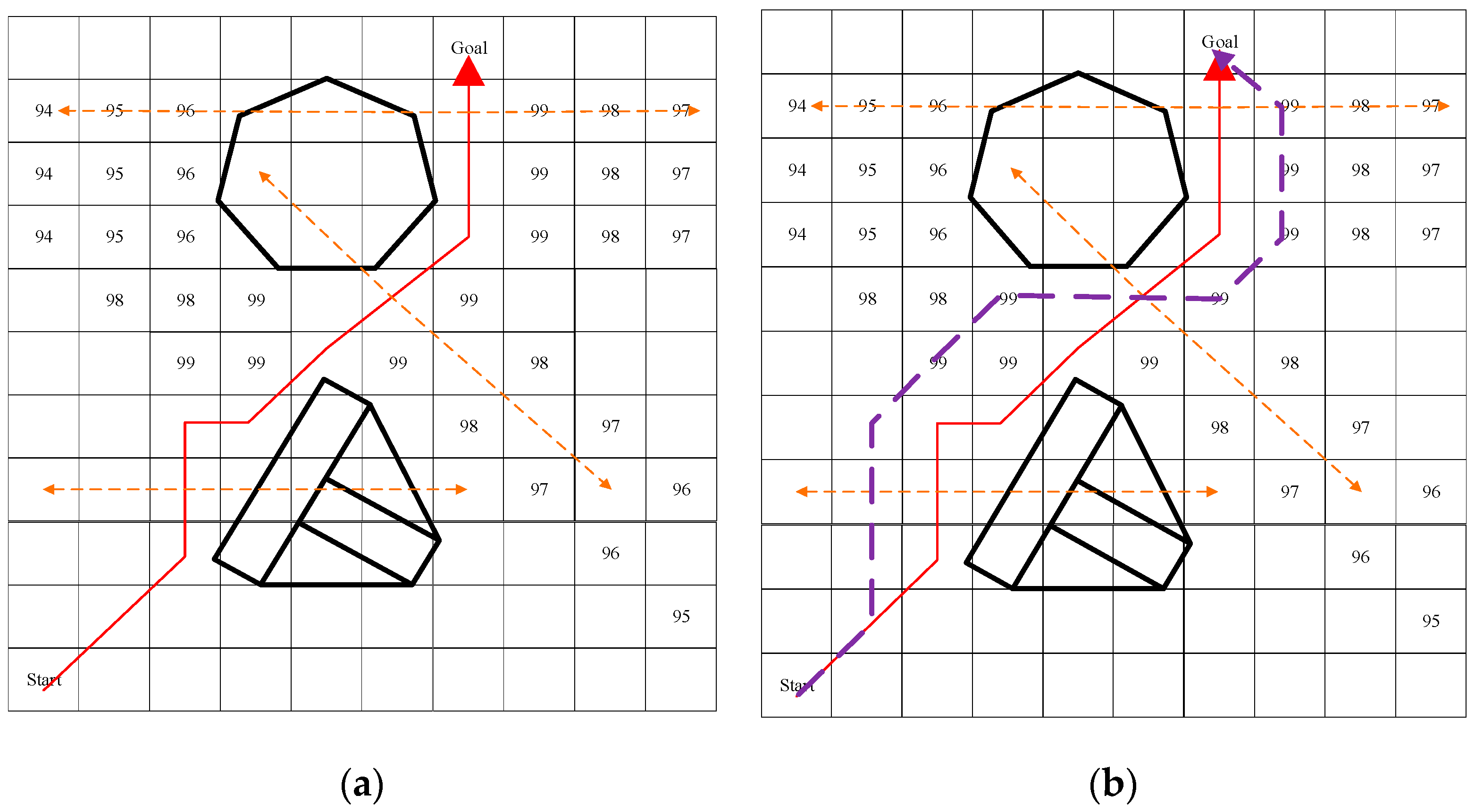
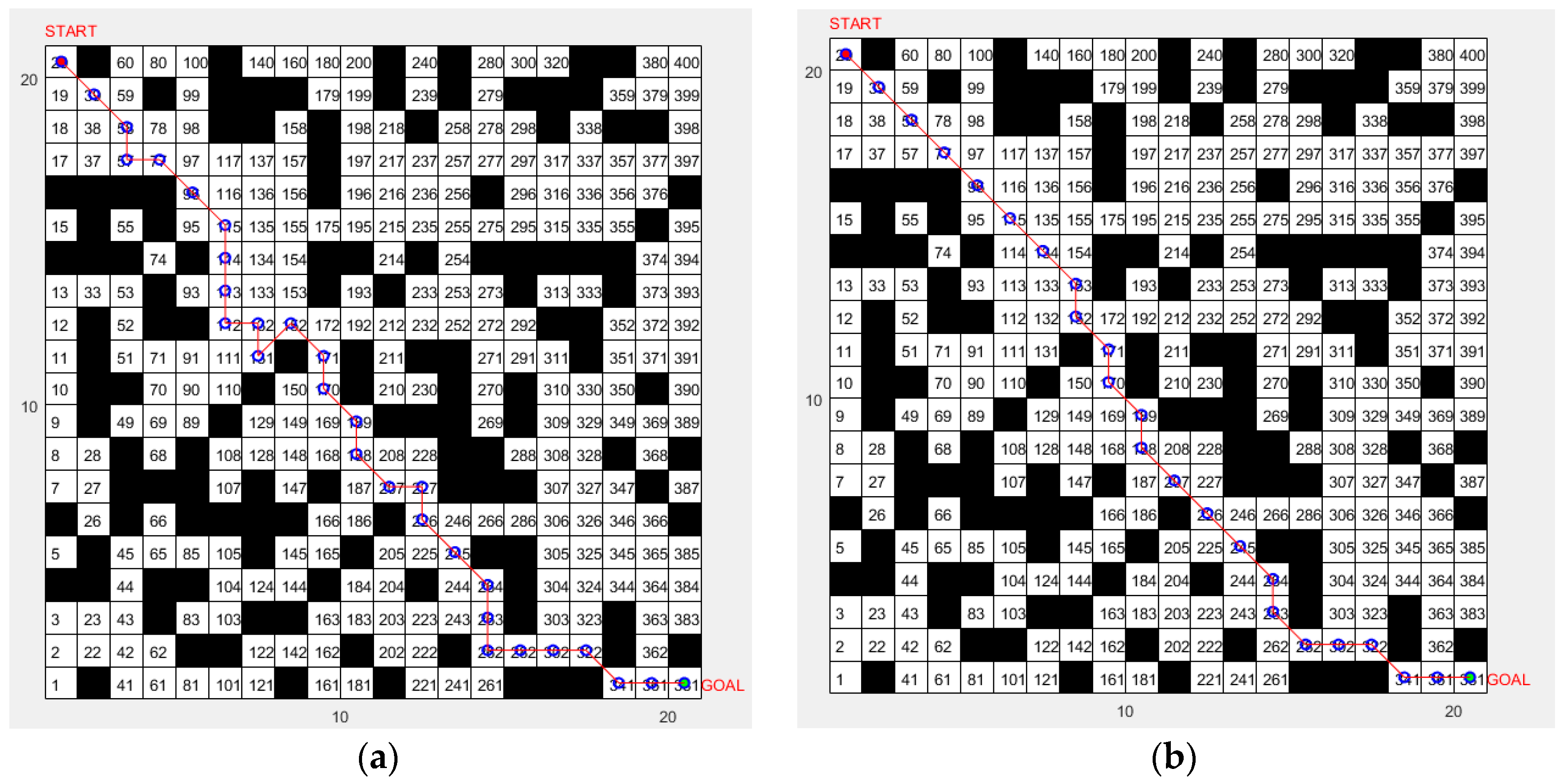
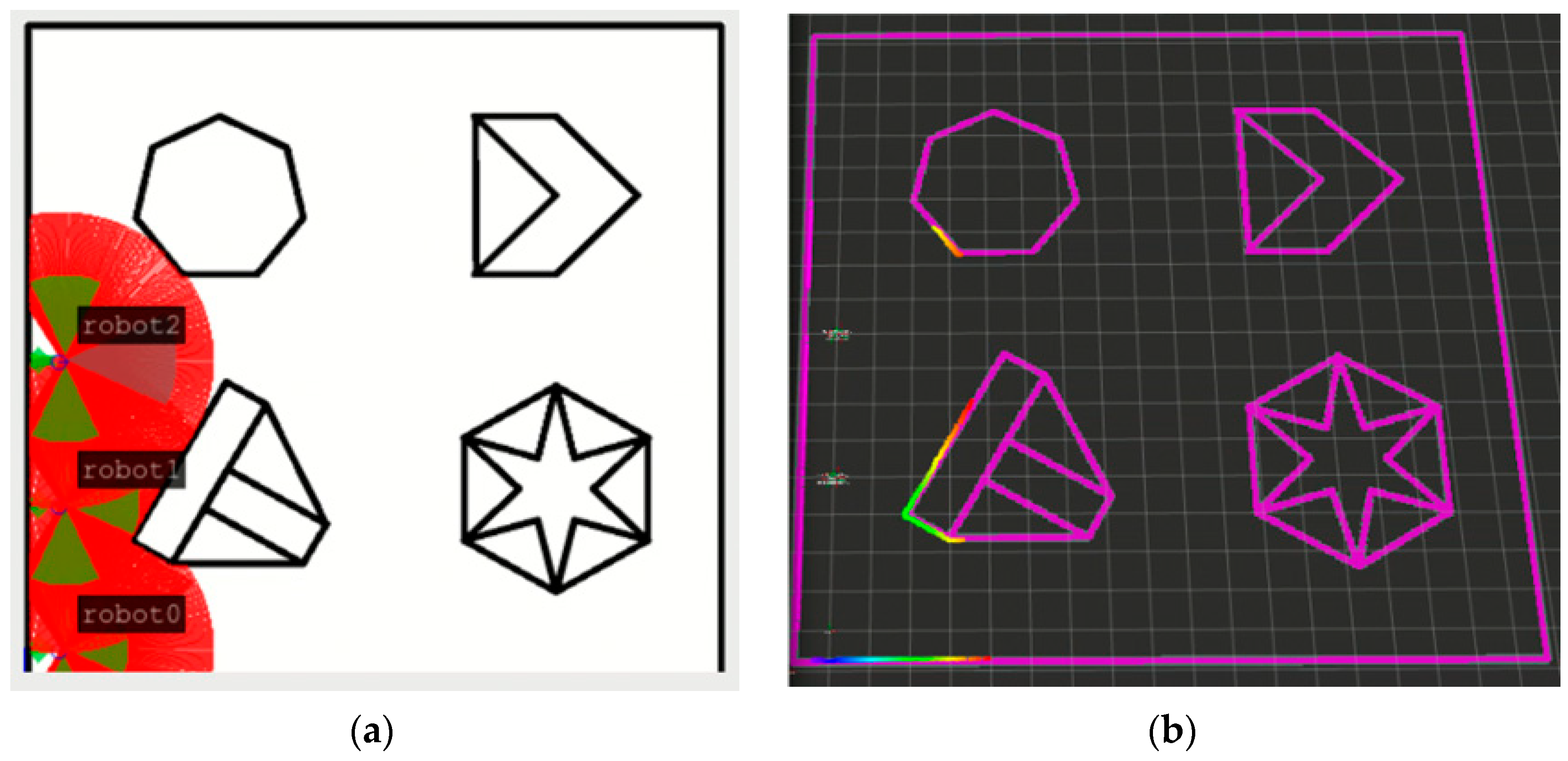
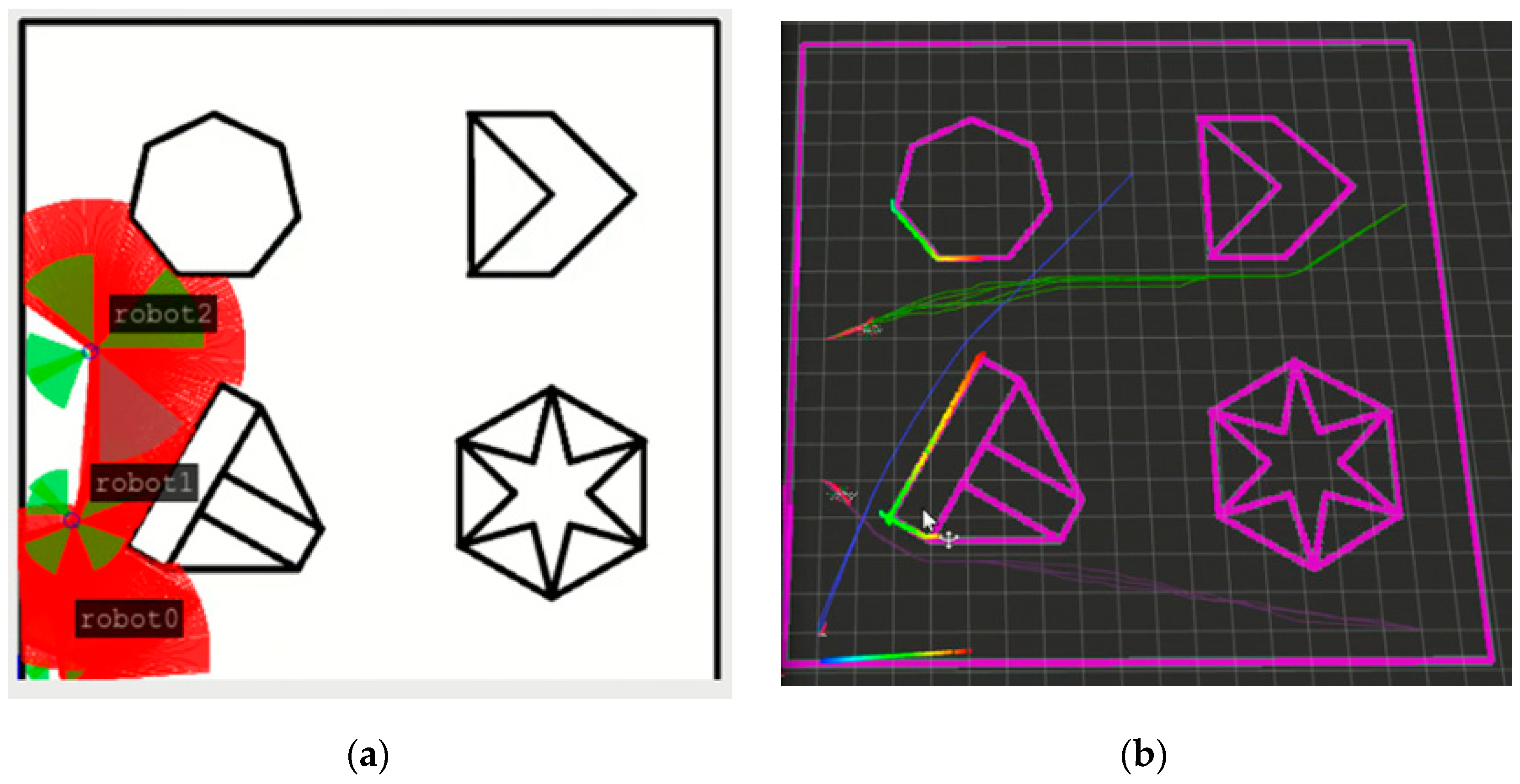
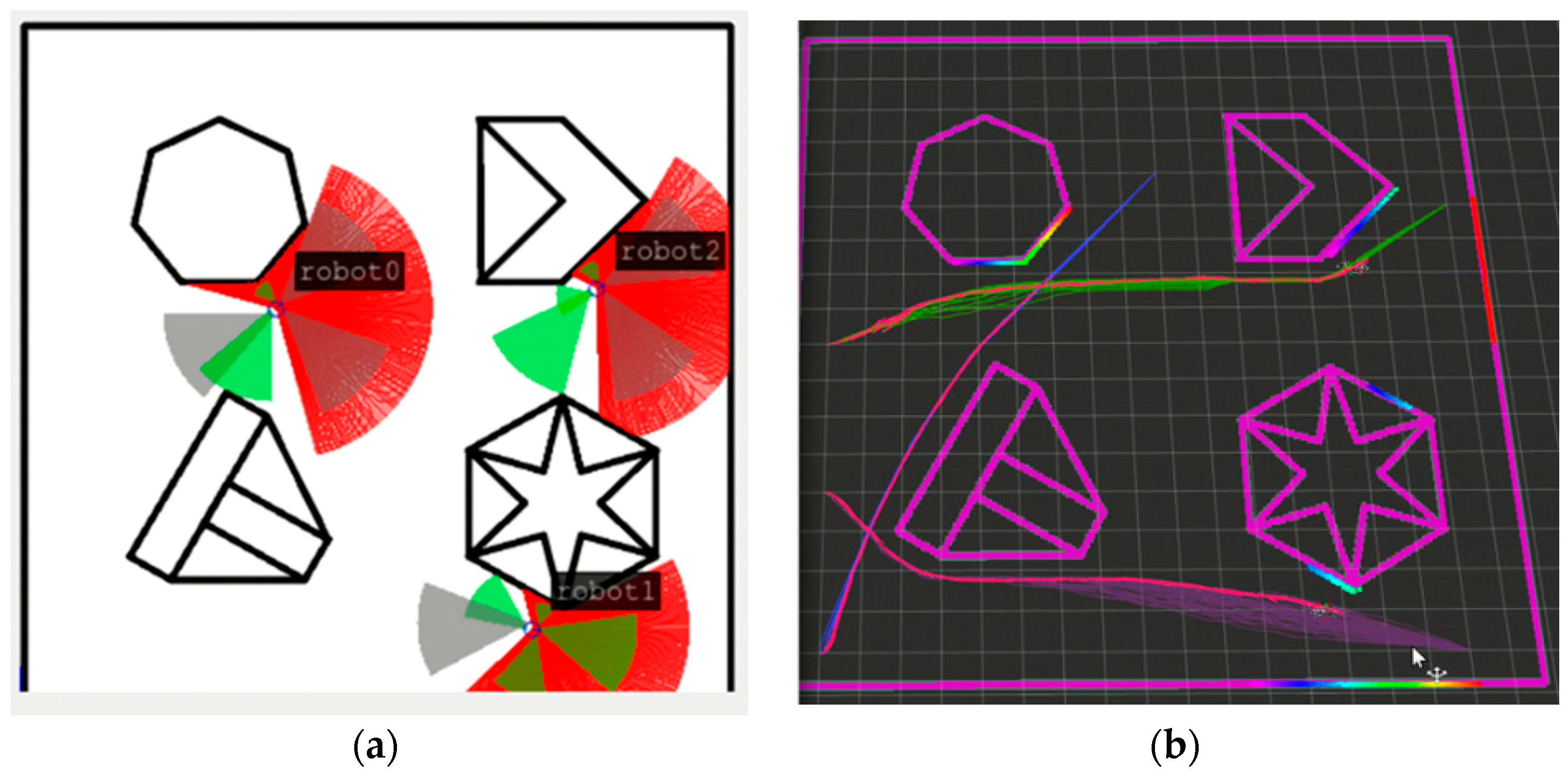

| Environment Map | Algorithms | The Longest Path Length | The Optimal Path Length | The Average Path Length | Iteration Time/s |
|---|---|---|---|---|---|
| 20 × 20 grids | AAFA | 35.1283 | 30.0348 | 33.6231 | 16.5182 |
| FL | 34.3848 | 29.7990 | 32.0919 | 12.2304 | |
| IGA | 32.3254 | 29.6325 | 30.8652 | 16.1826 | |
| Our method | 30.3848 | 29.2132 | 29.7990 | 9.3102 | |
| 40 × 40 grids | AAFA | 80.2372 | 73.7103 | 79.2293 | 98.5621 |
| FL | 75.1838 | 69.4975 | 72.3407 | 90.4073 | |
| IGA | 66.4723 | 62.9002 | 65.7213 | 97.7652 | |
| Our method | 64.0833 | 61.4264 | 62.7549 | 74.5801 |
© 2019 by the authors. Licensee MDPI, Basel, Switzerland. This article is an open access article distributed under the terms and conditions of the Creative Commons Attribution (CC BY) license (http://creativecommons.org/licenses/by/4.0/).
Share and Cite
Huang, Y.; Li, Z.; Jiang, Y.; Cheng, L. Cooperative Path Planning for Multiple Mobile Robots via HAFSA and an Expansion Logic Strategy. Appl. Sci. 2019, 9, 672. https://doi.org/10.3390/app9040672
Huang Y, Li Z, Jiang Y, Cheng L. Cooperative Path Planning for Multiple Mobile Robots via HAFSA and an Expansion Logic Strategy. Applied Sciences. 2019; 9(4):672. https://doi.org/10.3390/app9040672
Chicago/Turabian StyleHuang, Yiqing, Zhikun Li, Yan Jiang, and Lu Cheng. 2019. "Cooperative Path Planning for Multiple Mobile Robots via HAFSA and an Expansion Logic Strategy" Applied Sciences 9, no. 4: 672. https://doi.org/10.3390/app9040672
APA StyleHuang, Y., Li, Z., Jiang, Y., & Cheng, L. (2019). Cooperative Path Planning for Multiple Mobile Robots via HAFSA and an Expansion Logic Strategy. Applied Sciences, 9(4), 672. https://doi.org/10.3390/app9040672





